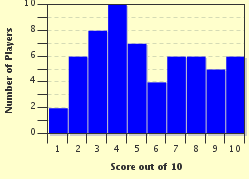Quiz Answer Key and Fun Facts
1. Let's start with one of the most famous Shakespearean sonnets. In 'Sonnet 130', the persona makes lots of comparisons, though most of them aren't very flattering. What are his mistress' eyes nothing like?
2. John Donne wrote a sonnet about something that affects us all. According to him, what should 'be not proud'?
3. Sir Philip Sidney published the first original English language sonnet sequence. It explored the love between a man and a woman. What were their names?
4. 'From Pamphilia to Amphilanthus' was an early 17th century sonnet sequence. What was unusual about it?
5. Petrarch gave his name to a type of sonnet called a 'Petrarchan'. The man himself wrote poetry about a woman he longed for and idolized. What was her name?
6. Mary Elizabeth Frye is famous for one poem alone. Its title and first line is 'Do Not Stand at My Grave and Weep', but what reason does the persona give for saying this?
7. Edna St. Vincent Millay's early 20th century sonnet 'Love is Not All' explores the idea that love alone cannot solve practical problems. Which of these four situations is NOT listed in the poem?
8. What is the topic of George Meredith's sonnet sequence 'Modern Love'?
9. Who is the persona talking about in George Herbert's 'Redemption'?
'Having been a tenant long to a rich Lord... Of thieves and murderers: there I him espied...'
10. Let's end on Shakespeare, too. In 'Sonnet 138', what does the persona's love swear that she is made of?
Source: Author
AcrylicInk
This quiz was reviewed by FunTrivia editor
looney_tunes before going online.
Any errors found in FunTrivia content are routinely corrected through our feedback system.

